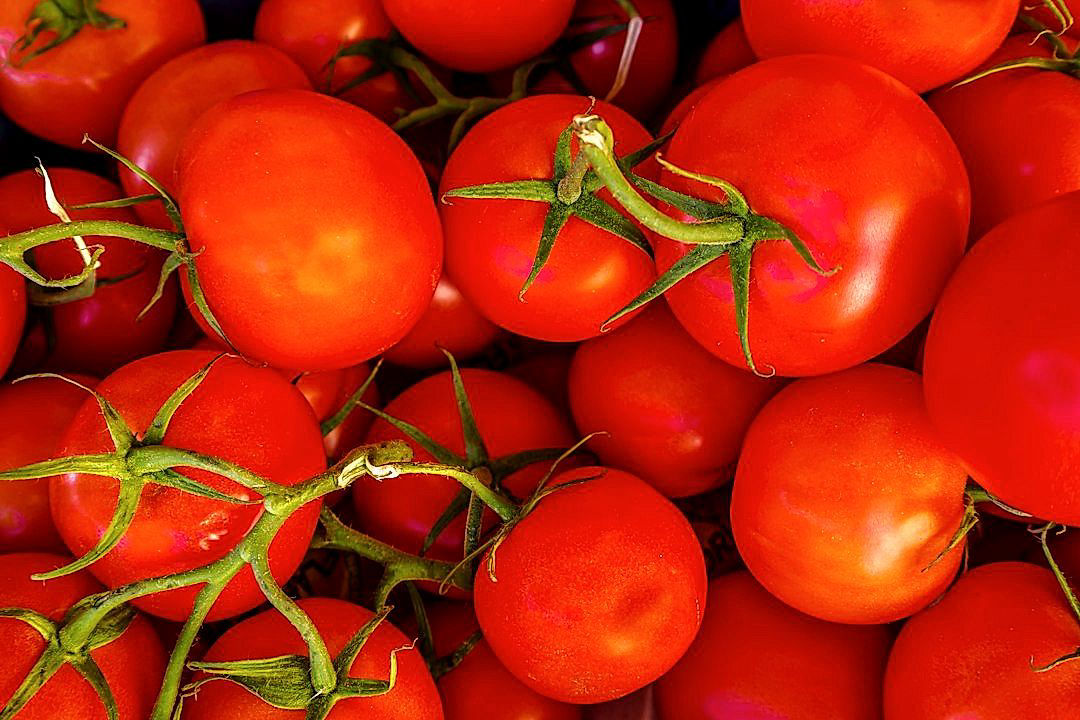In today’s global market, agricultural exporters are navigating through increasingly tense trade conditions.
Many factors contribute to this climate, specifically geopolitical disagreements and unforeseen disruptions like the COVID-19 pandemic.
For these businesses, formulating a robust strategy to combat these challenges is vital.
A profound understanding of both local and international trade dynamics is crucial.
This piece intends to shed light on practical strategies that can help them survive and even prosper despite these hurdles.
The intention is to provide insights that could potentially open new avenues for produce exporters globally.
Contents [hide]
- Strategies For Produce Exporters In Global Trade Tensions
- 1. Diversify Export Markets for Risk Distribution
- 2. Adapt Pricing Strategies to Absorb Tariffs
- 3. Implement cost-effective production methods
- 4. Increase Alliance with Foreign Distributers
- 5. Adopt new technologies for supply chain efficiency.
- 6. Finance for risk mitigation in export trade.
- 7. Protect through International Trade Agreements
- The Bottom Line
Strategies For Produce Exporters In Global Trade Tensions
1. Diversify Export Markets for Risk Distribution
As a produce exporter navigating the uncertain waters of global trade tensions, a critical strategy to employ is diversifying your export markets.
This approach is fundamentally a method of risk management, designed to insulate your business from the volatility of a single market, and to safeguard against potentially disastrous economic downturns or geopolitical events.
The global marketplace offers a myriad of opportunities for exporters to spread out their risks and opportunities by venturing into different markets.
By distributing your export risks, you increase the chances of maintaining steady revenue flow, even when one market underperforms or becomes inaccessible due to trade restrictions.
Diversification of export markets is not just about increasing the number of countries you export to, but also involves cultivating a deep understanding of these markets, their regulatory environment, and consumer preferences.
For instance, while expanding into a new Asian market might look attractive due its high population and potential demand, remember that cultural aspects play a prominent role in shaping consumer behavior and preferences in different countries.
What is considered a delicacy in one country may not necessarily appeal to consumers in another country, even one that is geographically nearby or demographically similar.
Conducting thorough market research is hence indispensable to successfully break into new geographic markets with your produce.
In addition to market research, you may also need to adapt your product in certain ways to make it appealing to consumers in different countries.
This strategy should be an ongoing process, with the introduction to new markets being gradual and carefully tested to assess the response before strong investments are made.
Also, remember that diversifying export markets does not mean neglecting your existing markets.
While it reduces the risks of being too reliant on a single market, maintaining strong ties with your existing clients and market segments is equally essential for sustainable long-term growth and profitability.
It is also well worth considering a diversification of your suppliers to avoid being heavily reliant on a single source.
A diversified supplier base can ensure a smooth supply chain by mitigating the risk associated with supplier failures or unexpected global events that might disrupt supplies.
In other words, diversifying export markets for risk distribution is a proactive and multifaceted strategy, involving thoughtful research, careful adaptation, and maintaining a balanced focus on old and new markets.
2. Adapt Pricing Strategies to Absorb Tariffs
Amidst rising global trade tensions, one major challenge for produce exporters arises in the form of increased tariffs.
These added costs can potentially disrupt the traditional pricing strategies as the increase in prices might discourage international customers, stretching the supply chain relationship to its limits.
To sustain in such a turbulent trade environment, exporters must adapt their pricing strategies.
One viable approach to this challenge is to implement a dynamic pricing strategy which allows flexibility in changing the prices according to market conditions.
This strategy allows the exporters to absorb the impact of the tariffs by adjusting their prices without jeopardizing the relationship with their international customers.
The dynamic pricing strategy creates a buffer against unpredictability in the market, hence making the business more resilient against global trade tensions.
Another effective pricing strategy is cost-plus pricing, where the price of the product is set above the cost of production, including tariffs, allowing exporters to recover their expenses.
This strategy might, however, lead to higher product prices which could discourage some cost-sensitive customers, thereby making market assessment crucial.
The success of these strategies largely depends upon a keen insight into the supply and demand conditions of the international markets.
The exporters must constantly monitor trade policies and market conditions and be ready to make necessary adjustments to their pricing strategies.
Another effective measure would be to employ a value-based pricing strategy.
In this approach, the price of the product is set based on its perceived value in the eyes of the customers rather than just the cost of production.
This might help exporters in maintaining their competitiveness and profit margins in the face of elevated tariffs.
In essence, in the face of increasing global trade tensions, the adaptation of pricing strategies is a critical tool for produce exporters to absorb the impact of rising tariffs.
They must be ready to fine-tune their strategies as trade policies and market conditions shift.
Providing value while maintaining a balance in pricing can help exporters navigate through the difficult path of international trade during these turbulent times.
3. Implement cost-effective production methods
Cost-effective production methods are essential for produce exporters facing global trade tensions.
By employing these methods, businesses can optimize their resources, thereby enhancing the profit margins even in volatile market conditions.
These production strategies demand an in-depth understanding of production processes, supply chain operations, and agricultural technologies.
An exporter should begin by examining their current production methods and identifying areas of inefficiencies and waste.
Replacing antiquated production techniques with modern, cost-effective methods can significantly reduce production costs and improve output quality.
Automation is one of these contemporary strategies; By automating repetitive tasks, labor costs can be saved and the process can be made more efficient.
In addition, it might be beneficial to explore precision farming techniques, which can improve yield quality while minimizing resource waste.
It is also crucial for exporters to stay abreast of advancements in agricultural technology. These can enable more efficient farming methods that decrease costs and increase yields.
Moreover, appropriate supply chain management strategies should also be implemented to minimize losses during transportation, storage, and distribution.
Mainly, cost-effective production isn’t only about minimizing expenses, but it also involves maximizing value by improving the quality of the produce.
Exporters should also consider implementing lean production techniques, which focus on reducing waste throughout the production process, thereby resulting in cost savings.
By employing the right combination of these cost-effective production strategies, exporters can have a competitive advantage in the international market despite trade tensions.
However, it’s essential to remember that implementing these methods requires time, financial resources, and strategic planning.
Nonetheless, with careful management and execution, the implementation of cost-effective production methods can ensure the survival and growth of export businesses amidst global trade tensions.
4. Increase Alliance with Foreign Distributers
An essential strategy for produce exporters in the face of global trade tensions is to increase their alliances with foreign distributors.
Fostering strong relationships with distributors in various parts of the globe can provide a buffer against trade restrictions and tariffs.
It alleviates reliance on a single market and distributes the risk more broadly.
Foreign distributors are familiar with the local business climate, regulatory requirements, and consumer preferences, which is advantageous for exporters.
This knowledge can be used to assist produce exporters in navigating unfamiliar territory, thus reducing trial errors and unnecessary expenses.
Higher profits and revenue stability can result from the combined buying power and shared resources that an increased alliance with foreign distributors can bring.
Moreover, increasing alliances with foreign distributors not only diversifies market access but also allows for the exchange of industry best practices and innovations.
This could be reciprocally beneficial and boost the competitiveness of both the exporter and the distributor.
By engaging foreign distributors, cash flows can be improved because of the decreased lead times and faster turnover of inventory.
Travel and communication expenses can be reduced dramatically by working with foreign distributors who have a deep understanding of their home market.
Exporters can leverage the distributor’s established infrastructure and local connections to quickly penetrate the market.
However, exporters will need to vet prospective foreign distributors closely to ensure they match with their business values and expectations.
A solid contract and open lines of communication are necessary to avoid potential misunderstandings and foster good business relations.
Overall, deepening alliances with foreign distributors present a strategic way forward for produce exporters grappling with global trade tensions.
It enables them to continue exporting their produce efficiently and profitably despite the varying market landscapes.
Therefore, it carries great importance for produce exporters to nurture a strong business relationship with foreign distributors, and regard them as more than just a means to an end.
5. Adopt new technologies for supply chain efficiency.
In today’s globalized world, one of the key strategies for produce exporters amid global trade tensions is to adopt new technologies that lead to supply chain efficiency.
Technology not only aids in reducing operational costs but also enhances productivity and ensures supply chain reliability.
Investment in automation can significantly enhance the efficiency of the produce supply chain.
This is achieved by accelerating the processes of packaging, sorting, and shipping, thereby enhancing the speed and accuracy of delivering produce to export markets.
Furthermore, advanced tracking technologies such as GPS and Radio Frequency Identification (RFID) offer real-time visibility of shipments, providing accountability, controllability, and ultimately, customer satisfaction.
Similarly, data analytics can play a critical role in forecasting demand, managing inventory, and mitigating risks associated with surplus or shortage of produce.
These analytical technologies can also assist produce exporters in identifying potential bottlenecks in the supply chain and formulating preemptive mitigation strategies.
Furthermore, over the recent years, emerging technologies such as blockchain have gained substantial attention in resolving supply chain complexities.
For produce exporters, the implementation of blockchain technology can ensure the transparency and traceability of transactions and shipments, instilling confidence among foreign distributors and buyers.
Apart from ensuring supply chain efficiency, technology can also aid in complying with evolving international standards pertaining to the quality, safety, and sustainability of agricultural produce.
In this regard, technologies such as Internet of Things (IoT) can help produce exporters monitor critical parameters such as temperature, humidity, and ripening gas levels, thereby ensuring the integrity of perishable produce en route to export markets.
Finally, the advent of the digital era has allowed produce exporters to leverage digital platforms for enhancing their reach and visibility in global markets.
These platforms can be instrumental in establishing direct contacts with foreign buyers and distributors, thereby bypassing expensive traditional intermediaries.
The integration of e-commerce platforms with supply chain management systems can ensure a seamless flow of information, coordination, and transactions between produce exporters and their foreign buyers.
In an era marked by increasing global trade tensions, the adoption of these and many other technologies is crucial for produce exporters in ensuring supply chain efficiency, mitigating risks, and sustaining amidst global competition.
6. Finance for risk mitigation in export trade.
The topic of finance for risk mitigation in export trade is becoming increasingly significant in today’s unpredictable world of global trade.
One cannot deny the fact that global trade tensions have placed additional financial strain on farmers and fresh produce exporters.
One solid strategy that can be adopted is to ensure sufficient financing specifically designated for mitigating such risks.
Evidently, when trade tensions rise, tariffs increase, and the risk involved in international trade becomes more intense.
Having a robust financial plan in place allows produce exporters to navigate through these turbulent waters with minimal damage.
But, how does one secure such a financial plan? The answer is twofold: Self-financing and external financing.
Exporters can put aside a certain percentage of their revenue as a risk mitigation fund.
This fund can then be used to cover unforeseen expenses caused by unexpected tariff changes or sudden variation in market demand.
While this practice requires financial discipline, it secures the exporter against unforeseen external factors.
On the other hand, external financing can be sought from various sources, such as banks, nontraditional lenders, export credit agencies, and even crowdfunding platforms.
These entities offer a range of financial products, including loans, credit lines, and even insurance policies, specifically designed for exporters dealing with trade risk.
These external financing options not only provide a financial cushion in strained times but also facilitate cash flow when revenues are hampered due to increased tariffs.
A significant aspect of financial risk mitigation also involves hedging currency risks.
Given that global trade usually involves transacting in foreign currencies, exchange rate volatility can significantly affect an exporter’s profitability.
Therefore, making use of currency forwards or options to hedge against unfavorable currency movements can be a practical strategy.
It is important to note, however, that these financiers and insurance providers assess a company’s risk based on its business model and strategies.
Therefore, having cost-effective production methods, an efficient supply chain, diversified export markets, and solid international trade agreements are key for a favorable assessment.
At the end of the day, a proactive approach to finance for risk mitigation in export trade helps produce exporters to remain resilient in the face of rising global trade tensions.
7. Protect through International Trade Agreements
To navigate the complexity of global trade tensions, protecting your exports through international trade agreements can be a crucial strategy for produce exporters.
These agreements provide a framework that governs trade relations among different countries, offering a degree of predictability and protection.
International trade agreements often reduce or eliminate tariffs, making it more cost-effective for produce exporters to operate in the global market.
Legally-binding commitments of these agreements can provide security against unforeseen abrupt changes in trade policy.
However, it’s essential for produce exporters to actively engage in the negotiation process of these trade agreements.
By expressing their concerns and requirements, exporters can strive to shape the agreement in a way that benefits their business.
Involvement in negotiations also allows exporters to gain first-hand knowledge and understanding of the potential implications of the agreement on their business.
Understanding the terms and conditions of international trade agreements is crucial in foreseeing the foreseeable and preparing for the unpredictable.
Exporters should also proactively seek opportunities to form new trade agreements with emerging markets.
Exploring new markets not only allows for increase in sales, but also for risk distribution in times of global trade tensions.
Furthermore, seeking legal and professional advice can also be beneficial as interpreting the complex clauses and provisions of international trade agreements can be challenging.
Understanding these complexities can help exporters to identify and avoid any potential trade disputes or legal issues.
Lastly, it’s important for produce exporters to understand that international trade agreements aren’t a cure-all solution.
While they offer numerous benefits, these agreements should be viewed as a part of a comprehensive strategy to navigate global trade tensions.
Other measures such as diversification, competitive pricing strategy, and efficient supply chain management should also be incorporated within the business model for a rounded approach against trade tensions.
Joining international trade agreements is one of many strategies in the intricate chess game of global trade; it requires careful consideration, proactive participation, and a deep understanding of the changing dynamics of international trade relations.
The Bottom Line
Indeed, exporters must take a strategic and holistic approach in order to thrive amidst a rapidly-changing global trade landscape.
By diversifying their market base, they can better distribute risks, while adaptive pricing strategies can help absorb tariff shocks.
More cost-effective production methods ought to be explored to optimize resources.
Forming alliances with foreign distributors can enhance supply chain operations and market reach.
Leaning into innovative technologies also promises increased supply chain efficiency.
Meanwhile, strategic financial plans can put exporters on steady footing even as uncertainties loom in export trade.
Lastly, protections afforded by international trade agreements must be proactively sought and capitalized on.
Overall, businesses that are resilient, agile, and globally-minded stand the best chance at success in a complex, dynamic export market environment.




